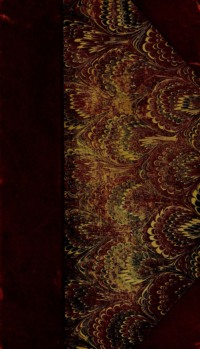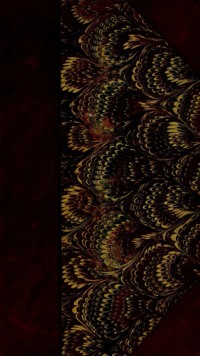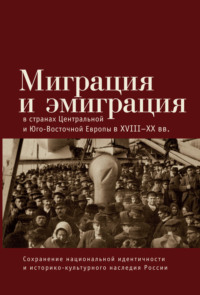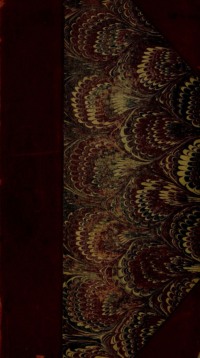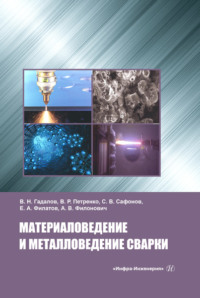 полная версия
полная версияThe German Classics of the Nineteenth and Twentieth Centuries, Volume 07
The military class is the class of universality. The defense of the State is its privilege, and its duty is to realize the ideality contained in it, which consists in self-sacrifice. There are different kinds of bravery. The courage of the animal, or the robber, the bravery which arises from a sense of honor, the chivalrous bravery, are not yet the true forms of it. In civilized nations true bravery consists in the readiness to give oneself wholly to the service of the State, so that the individual counts but as one among many. Not personal valor, but the important aspect of it, lies in self-subordination to the universal cause.
To risk one's life is indeed something more than mere fear of death, but this is only negative; only a positive character—an aim and content—gives meaning to bravery. Robbers and murderers in the pursuit of crime, adventurers in the search of their fanciful objects, etc., also possess courage, and do not fear death. The principle of the modern world—the power of thought and of the universal—has given to bravery a higher form; the higher form causes the expression of bravery to appear more mechanical. The brave deeds are not the deeds of any particular person, but those of the members of a whole. And, again, since hostility is directed, not against separate individuals, but against a hostile whole, personal valor appears as impersonal. This principle it is which has caused the invention of the gun; it is not a chance invention that has brought about the change of the mere personal form of bravery into the more abstract.
INTERNATIONAL RELATIONS
Just as the individual is not a real person unless related to other persons, so the State is no real individuality unless related to other States. The legitimate power of a State, and more especially its princely power, is, from the point of view of its foreign relations, a wholly internal affair. A State shall, therefore, not interfere with the internal affairs of another State. On the other hand, for a complete State, it is essential that it be recognized by others; but this recognition demands as a guarantee that it shall recognize those States which recognize it, and shall respect their independence. Hence its internal affairs cannot be a matter of indifference to them.
When Napoleon, before the peace of Campoformio, said, "The French Republic requires recognition as little as the sun needs to be recognized," his words suggest nothing but the strength of existence, which already carries with it the guarantee of recognition, without needing to be expressed.
When the particular wills of the State can come to no agreement their controversy can be decided only by war. What offense shall be regarded as a breach of a treaty, or as a violation of respect and honor, must remain indefinite, since many and various injuries can easily accrue from the wide range of the interests of the States and from the complex relations of their citizens. The State may identify its infinitude and honor with every one of its single aspects. And if a State, as a strong individuality, has experienced an unduly protracted internal rest, it will naturally be more inclined to irritability, in order to find an occasion and field for intense activity.
The nations of Europe form a family according to the universal principle of their legislation, their ethical code, and their civilization. But the relation among States fluctuates, and no judge exists to adjust their differences. The higher judge is the universal and absolute Spirit alone—the World-Spirit.
The relation of one particular State to another presents, on the largest possible scale, the most shifting play of individual passions, interests, aims, talents, virtues, power, injustice, vice, and mere external chance. It is a play in which even the ethical whole, the independence of the State, is exposed to accident. The principles which control the many national spirits are limited. Each nation as an existing individuality is guided by its particular principles, and only as a particular individuality can each national spirit win objectivity and self-consciousness; but the fortunes and deeds of States in their relation to one another reveal the dialectic of the finite nature of these spirits. Out of this dialectic rises the universal Spirit, the unlimited World-Spirit, pronouncing its judgment—and its judgment is the highest—upon the finite nations of the world's history; for the history of the world is the world's court of justice.
INTRODUCTION TO THE PHILOSOPHY OF ART (1820-21)
TRANSLATED BY J. LOEWENBERG, PH.D. Assistant in Philosophy, Harvard University
THE MEANING OF ARTThe appropriate expression for our subject is the "Philosophy of Art," or, more precisely, the "Philosophy of Fine Arts." By this expression we wish to exclude the beauty of nature. In common life we are in the habit of speaking of beautiful color, a beautiful sky, a beautiful river, beautiful flowers, beautiful animals, and beautiful human beings. But quite aside from the question, which we wish not to discuss here, how far beauty may be predicated of such objects, or how far natural beauty may be placed side by side with artistic beauty, we must begin by maintaining that artistic beauty is higher than the beauty of nature. For the beauty of art is beauty born—and born again—of the spirit. And as spirit and its products stand higher than nature and its phenomena, by so much the beauty that resides in art is superior to the beauty of nature.
To say that spirit and artistic beauty stand higher than natural beauty, is to say very little, for "higher" is a very indefinite expression, which states the difference between them as quantitative and external. The "higher" quality of spirit and of artistic beauty does not at all stand in a merely relative position to nature. Spirit only is the true essence and content of the world, so that whatever is beautiful is truly beautiful only when it partakes of this higher essence and is produced by it. In this sense natural beauty appears only as a reflection of the beauty that belongs to spirit; it is an imperfect and incomplete expression of the spiritual substance.
Confining ourselves to artistic beauty, we must first consider certain difficulties. The first that suggests itself is the question whether art is at all worthy of a philosophic treatment. To be sure, art and beauty pervade, like a kindly genius, all the affairs of life, and joyously adorn all its inner and outer phases, softening the gravity and the burden of actual existence, furnishing pleasure for idle moments, and, where it can accomplish nothing positive, driving evil away by occupying its place. Yet, although art wins its way everywhere with its pleasing forms, from the crude adornment of the savages to the splendor of the temple with its marvelous wealth of decoration, art itself appears to fall outside the real aims of life. And though the creations of art cannot be said to be directly disadvantageous to the serious purposes of life, nay, on occasion actually further them by holding evil at bay, on the whole, art belongs to the relaxation and leisure of the mind, while the substantial interests of life demand its exertion. At any rate, such a view renders art a superfluity, though the tender and emotional influence which is wrought upon the mind by occupation with art is not thought necessarily detrimental, because effeminate.
There are others, again, who, though acknowledging art to be a luxury, have thought it necessary to defend it by pointing to the practical necessities of the fine arts and to the relation they bear to morality and piety. Very serious aims have been ascribed to art. Art has been recommended as a mediator between reason and sensuousness, between inclination and duty, as the reconcilor of all these elements constantly warring with one another. But it must be said that, by making art serve two masters, it is not rendered thereby more worthy of a philosophic treatment. Instead of being an end in itself, art is degraded into a means of appealing to higher aims, on the one hand, and to frivolity and idleness on the other.
Art considered as means offers another difficulty which springs from its form. Granting that art can be subordinated to serious aims and that the results which it thus produces will be significant, still the means used by art is deception, for beauty is appearance, its form is its life; and one must admit that a true and real purpose should not be achieved through deception. Even if a good end is thus, now and then, attained by art its success is rather limited, and even then deception cannot be recommended as a worthy means; for the means should be adequate to the dignity of the end, and truth can be produced by truth alone and not by deception and semblance.
It may thus appear as if art were not worthy of philosophic consideration because it is supposed to be merely a pleasing pastime; even when it pursues more serious aims it does not correspond with their nature. On the whole, it is conceived to serve both grave and light interests, achieving its results by means of deception and semblance.
As for the worthiness of art to be philosophically considered, it is indeed true that art can be used as a casual amusement, furnishing enjoyment and pleasure, decorating our surroundings, lending grace to the external conditions of life, and giving prominence to other objects through ornamentation. Art thus employed is indeed not an independent or free, but rather a subservient art. That art might serve other purposes and still retain its pleasure-giving function, is a relation which it has in common with thought. For science, too, in the hands of the servile understanding is used for finite ends and accidental means, and is thus not self-sufficient, but is determined by outer objects and circumstances. On the other hand, science can emancipate itself from such service and can rise in free independence to the pursuit of truth, in which the realization of its own aims is its proper function.
Art is not genuine art until it has thus liberated itself. It fulfils its highest task when it has joined the same sphere with religion and philosophy and has become a certain mode of bringing to consciousness and expression the divine meaning of things, the deepest interests of mankind, and the most universal truths of the spirit. Into works of art the nations have wrought their most profound ideas and aspirations. Fine Art often constitutes the key, and with many nations it is the only key, to an understanding of their wisdom and religion. This character art has in common with religion and philosophy. Art's peculiar feature, however, consists in its ability to represent in sensuous form even the highest ideas, bringing them thus nearer to the character of natural phenomena, to the senses, and to feeling. It is the height of a supra-sensuous world into which thought reaches, but it always appears to immediate consciousness and to present experience as an alien beyond. Through the power of philosophic thinking we are able to soar above what is merely here, above sensuous and finite experience. But spirit can heal the breach between the supra-sensuous and the sensuous brought on by its own advance; it produces out of itself the world of fine art as the first reconciling medium between what is merely external, sensuous, and transient, and the world of pure thought, between nature with its finite reality and the infinite freedom of philosophic reason.
Concerning the unworthiness of art because of its character as appearance and deception, it must be admitted that such criticism would not be without justice, if appearance could be said to be equivalent to falsehood and thus to something that ought not to be. Appearance is essential to reality; truth could not be, did it not shine through appearance. Therefore not appearance in general can be objected to, but merely the particular kind of appearance through which art seeks to portray truth. To charge the appearance in which art chooses to embody its ideas as deception, receives meaning only by comparison with the external world of phenomena and its immediate materiality, as well as with the inner world of sensations and feelings. To these two worlds we are wont, in our empirical work-a-day life, to attribute the value of actuality, reality, and truth, in contrast to art, which is supposed to be lacking such reality and truth. But, in fact, it is just the whole sphere of the empirical inner and outer world that is not the world of true reality; indeed it may be called a mere show and a cruel deception in a far stricter sense than in the case of art. Only beyond the immediacy of sense and of external objects is genuine reality to be found. Truly real is but the fundamental essence and the underlying substance of nature and of spirit, and the universal element in nature and in spirit is precisely what art accentuates and makes visible. This essence of reality appears also in the common outer and inner world, but it appears in the form of a chaos of contingencies, distorted by the immediateness of sense perception, and by the capriciousness of conditions, events, characters, etc. Art frees the true meaning of appearances from the show and deception of this bad and transient world, and invests it with a higher reality, born of the spirit. Thus, far removed from being mere appearances, the products of art have a higher reality and a more genuine being than the things of ordinary life.
THE CONTENT AND IDEAL OF ART
The content of art is spiritual, and its form is sensuous; both sides art has to reconcile into a united whole. The first requirement is that the content, which art is to represent, must be worthy of artistic representation; otherwise we obtain only a bad unity, since a content not capable of artistic treatment is made to take on an artistic form, and a matter prosaic in itself is forced into a form quite opposed to its inherent nature.
The second requirement demands of the content of art that it shall be no abstraction. By this is not meant that it must be concrete, as the sensuous is alleged to be concrete in contrast to everything spiritual and intellectual. For everything that is genuinely true, in the realm of thought as well as in the domain of nature, is concrete, and has, in spite of universality, nevertheless, a particular and subjective character. By saying, for example, that God is simply One, the Supreme Being as such, we express thereby nothing but a lifeless abstraction of an understanding devoid of reason. Such a God, as indeed he is not conceived in his concrete truth, can furnish no content for art, least of all for plastic art. Thus the Jews and the Turks have not been able to represent their God, who is still more abstract, in the positive manner in which the Christians have represented theirs. For in Christianity God is conceived in his truth, and therefore concrete, as a person, as a subject, and, more precisely still, as Spirit. What he is as spirit appears to the religious consciousness as a Trinity of persons, which at the same time is One. Here the essence of God is the reconciled unity of universality and particularity, such unity alone being concrete. Hence, as a content in order to be true must be concrete in this sense, art demands the same concreteness; because a mere abstract idea, or an abstract universal, cannot manifest itself in a particular and sensuous unified form.
If a true and therefore concrete content is to have its adequate sensuous form and shape, this sensuous form must—this being the third requirement—also be something individual, completely concrete, and one. The nature of concreteness belonging to both the content and the representation of art, is precisely the point in which both can coincide and correspond to each other. The natural shape of the human body, for example, is a sensuous concrete object, which is perfectly adequate to represent the spiritual in its concreteness; the view should therefore be abandoned that an existing object from the external world is accidentally chosen by art to express a spiritual idea. Art does not seize upon this or that form either because it simply finds it or because it can find no other, but the concrete spiritual content itself carries with it the element of external, real, yes, even sensuous, representation. And this is the reason why a sensuous concrete object, which bears the impress of an essentially spiritual content, addresses itself to the inner eye; the outward shape whereby the content is rendered visible and imaginable aims at an existence only in our heart and mind. For this reason alone are content and artistic shape harmoniously wrought. The mere sensuously concrete external nature as such has not this purpose for its only origin. The gay and variegated plumage of the birds shines unseen, and their song dies away unheard; the torch-thistle which blossoms only for a night withers without having been admired in the wilds of southern forests; and these forests, groves of the most beautiful and luxuriant vegetation, with the most odorous and fragrant perfumes, perish and waste, no more enjoyed. The work of art is not so unconsciously self-immersed, but it is essentially a question, an address to the responsive soul, an appeal to the heart and to the mind.
Although the sensuous form in which art clothes its content is not accidental, yet it is not the highest form whereby the spiritually concrete may be grasped. A higher mode than representation through a sensuous form, is thought. True and rational thinking, though in a relative sense abstract, must not be one-sided, but concrete. How far a definite content can be adequately treated by art and how far it needs, according to its nature, a higher and more spiritual form, is a distinction which we see at once if, for example, the Greek gods are compared with God as conceived in accordance with Christian notions. The Greek god is not abstract but individual, closely related to the natural human form. The Christian God is also a concrete personality, but he is pure spiritually, and can be known only as spirit and in spirit. His sphere of existence is therefore essentially inner knowledge, and not the outer natural shape through which he can be represented but imperfectly and not in the whole depth of his essence.
But the task of art is to represent a spiritual idea to direct contemplation in sensuous form, and not in the form of thought or of pure spirituality. The value and dignity of such representation lies in the correspondence and unity of the two sides, of the spiritual content and its sensuous embodiment, so that the perfection and excellency of art must depend upon the grade of inner harmony and union with which the spiritual idea and the sensuous form interpenetrate.
The requirement of the conformity of spiritual idea and sensuous form might at first be interpreted as meaning that any idea whatever would suffice, so long as the concrete form represented this idea and no other. Such a view, however, would confound the ideal of art with mere correctness, which consists in the expression of any meaning in its appropriate form. The artistic ideal is not to be thus understood. For any content whatever is capable, according to the standard of its own nature, of adequate representation, but yet it does not for that reason lay claim to artistic beauty in the ideal sense. Judged by the standard of ideal beauty, even such correct representation will be defective. In this connection we may remark that the defects of a work of art are not to be considered simply as always due to the incapacity of the artist; defectiveness of form has also its root in defectiveness of content. Thus, for instance, the Chinese, Indians, Egyptians, in their artistic objects, their representations of the gods, and their idols, adhered to formlessness, or to a vague and inarticulate form, and were not able to arrive at genuine beauty, because their mythological ideas, the content and conception of their works of art, were as yet vague and obscure. The more perfect in form works of art are, the more profound is the inner truth of their content and thought. And it is not merely a question of the greater or lesser skill with which the objects of external nature are studied and copied, for, in certain stages of artistic consciousness and artistic activity, the misrepresentation and distortion of natural objects are not unintentional technical inexpertness and incapacity, but conscious alteration, which depends upon the content that is in consciousness, and is, in fact, demanded by it. We may thus speak of imperfect art, which, in its own proper sphere, may be quite perfect both technically and in other respects. When compared with the highest idea and ideal of art, it is indeed defective. In the highest art alone are the idea and its representation in perfect congruity, because the sensuous form of the idea is in itself the adequate form, and because the content, which that form embodies, is itself a genuine content.
The higher truth of art consists, then, in the spiritual having attained a sensuous form adequate to its essence. And this also furnishes the principle of division for the philosophy of art. For the Spirit, before it wins the true meaning of its absolute essence, has to develop through a series of stages which constitute its very life. To this universal evolution there corresponds a development of the phases of art, under the form of which the Spirit—as artist—attains to a comprehension of its own meaning.
This evolution within the spirit of art has two sides. The development is, in the first place, a spiritual and universal one, in so far as a gradual series of definite conceptions of the universe—of nature, man, and God—finds artistic representation. In the second place, this universal development of art, embodying itself in sensuous form, determines definite modes of artistic expression and a totality of necessary distinctions within the sphere of art. These constitute the particular arts.
We have now to consider three definite relations of the spiritual idea to its sensuous expression.
SYMBOLIC ART
Art begins when the spiritual idea, being itself still indefinite and obscure and ill-comprehended, is made the content of artistic forms. As indefinite, it does not yet have that individuality which the artistic ideal demands; its abstractness and one-sidedness thus render its shape defective and whimsical. The first form of art is therefore rather a mere search after plasticity than a capacity of true representation. The spiritual idea has not yet found its adequate form, but is still engaged in striving and struggling after it. This form we may, in general, call the symbolic form of art; in such form the abstract idea assumes a shape in natural sensuous matter which is foreign to it; with this foreign matter the artistic creation begins, from which, however, it seems unable to free itself. The objects of external nature are reproduced unchanged, but at the same time the meaning of the spiritual idea is attached to them. They thus receive the vocation of expressing it, and must be interpreted as if the spiritual idea were actually present in them. It is indeed true that natural objects possess an aspect which makes them capable of representing a universal meaning, but in symbolic art a complete correspondence is not yet possible. In it the correspondence is confined to an abstract quality, as when, for example, a lion is meant to stand for strength.
This abstract relation brings also to consciousness the foreignness of the spiritual idea to natural phenomena. And the spiritual idea, having no other reality to express its essence, expatiates in all these natural shapes, seeks itself in their unrest and disproportion, but finds them inadequate to it. It then exaggerates these natural phenomena and shapes them into the huge and the boundless. The spiritual idea revels in them, as it were, seethes and ferments in them, does violence to them, distorts and disfigures them into grotesque shapes, and endeavors by the diversity, hugeness, and splendor of such forms to raise the natural phenomena to the spiritual level. For here it is the spiritual idea which is more or less vague and non-plastic, while the objects of nature have a thoroughly definite form.
The incongruity of the two elements to each other makes the relation of the spiritual idea to objective reality a negative one. The spiritual as a wholly inner element and as the universal substance of all things, is conceived unsatisfied with all externality, and in its sublimity it triumphs over the abundance of unsuitable forms. In this conception of sublimity the natural objects and the human shapes are accepted and left unaltered, but at the same time recognized as inadequate to their own inner meaning; it is this inner meaning which is glorified far and above every worldly content.


